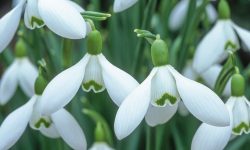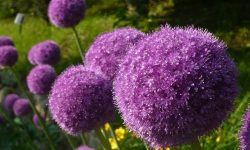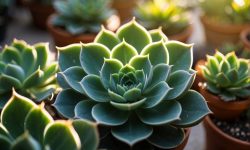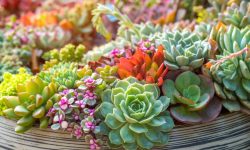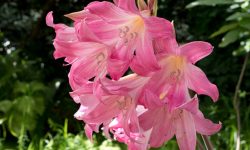Begonias are among the most versatile and beloved ornamental plants, celebrated for their vibrant blooms, richly textured foliage, and their ability to thrive both indoors and outdoors. Whether displayed in garden beds, hanging baskets, or windowsills, their wide-ranging beauty and charm make them a favorite among plant lovers of all levels.
With over 1,800 known species and countless cultivars, choosing the right type of begonia can be a bit daunting—even for experienced gardeners. This comprehensive guide will help you identify the most popular varieties, match them with the right growing conditions, and care for them year-round so your begonias remain stunning and healthy in every season.
Understanding the Main Categories of Begonias
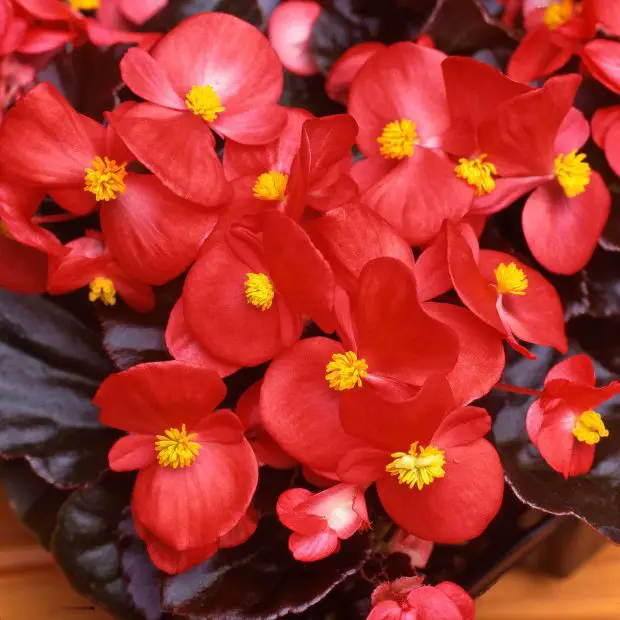
Tuberous Begonias
Tuberous begonias are known for their large, showy flowers and are typically grown outdoors in containers, hanging baskets, or shaded garden beds. These begonias grow from tubers and go dormant in winter, making them a seasonal favorite for summer gardens. Their flowers resemble roses or camellias, and they thrive in cooler, humid environments. Because they cannot tolerate frost, their tubers should be stored indoors during the cold months.
Rex Begonias
If dramatic foliage is your goal, Rex begonias are the showstoppers of the begonia world. These plants are prized for their spiral leaves, bold color patterns, and velvety textures. Rex begonias are primarily grown as houseplants since they prefer stable temperatures and high humidity. They are more sensitive than other types, requiring careful moisture management and filtered light to prevent leaf damage.
Fibrous or Wax Begonias
Fibrous-rooted begonias, also known as wax begonias, are among the most common bedding plants used in American gardens. They have shiny, waxy leaves and bloom profusely throughout the growing season. These begonias are very adaptable, tolerating partial sun, dry conditions, and even poor soil, making them ideal for beginners. They don’t go dormant like tuberous varieties, and in warmer climates, they can thrive year-round.
Rhizomatous Begonias
Rhizomatous begonias are another foliage-focused group, characterized by thick stems that grow horizontally across the soil surface. These plants are ideal for indoor containers and terrariums thanks to their low, spreading habit and striking leaf shapes. Their flowers are usually small, but their leaves are their main attraction. They enjoy bright, indirect light and consistent moisture without being waterlogged.
Choosing the Right Begonia for Your Space
Understand and Assess Light Conditions
Selecting the right begonia variety starts with understanding how much light your space receives throughout the day. Light tolerance among begonias varies significantly by type, and matching the plant to the available light is key to healthy growth and vibrant flowering.
Tuberous begonias, known for their large, showy blooms, thrive best in bright but indirect sunlight. They prefer morning sun with some protection from the intense afternoon rays, especially in warmer zones. Too much direct sun can scorch their petals or cause the leaves to fade or wilt. They’re ideal for filtered light settings such as under pergolas, shade cloths, or partially shaded garden beds.
Rex and rhizomatous begonias, primarily grown for their colorful foliage, are far more sensitive to light. They prefer low to moderate indoor light, such as a north-facing window or a location a few feet away from a bright window where direct sun won’t hit their leaves. Strong sunlight can easily bleach or burn their intricate leaf patterns. These begonias do well under artificial grow lights if natural lighting is insufficient.
Wax begonias, often used in mass plantings or bedding displays, are the most light-tolerant. In cooler climates, they thrive in full sun. However, in hotter regions like the southern U.S., they benefit from afternoon shade to avoid leaf scorch and maintain lush growth. When grown indoors, wax begonias do best near a sunny window with good air circulation.
Consider Regional Climate, Temperature, and Humidity
Temperature and humidity are two other essential factors that influence which begonias will thrive in your environment. Begonias are native to tropical and subtropical regions, so they generally dislike extreme cold or dry conditions.
Tuberous begonias prefer a temperate summer climate where daytime temperatures range between 65 and 75°F. They are sensitive to both extreme heat and cold and will struggle if temperatures consistently rise above 85°F. In very hot areas, they should be grown in part-shade or moved to a cooler microclimate. They also require excellent air circulation to avoid powdery mildew and botrytis rot.
Rex begonias, prized for their striking foliage rather than flowers, grow best indoors where temperatures are stable—ideally between 60 and 75°F. They are highly sensitive to dry air, often developing crisp, brown edges on their leaves when humidity drops. In winter, when indoor heating dries out the air, consider using a humidity tray, grouping plants together to increase ambient moisture, or running a room humidifier to maintain at least 50% humidity.
Fibrous-rooted begonias, including wax and angel-wing varieties, are more forgiving of temperature fluctuations and lower humidity. They can tolerate brief dry spells and some cooler nights, making them suitable for a wide range of USDA zones from 9 to 11 outdoors, or as easy-care houseplants in any region. However, they still dislike frost and should be brought indoors before nighttime temperatures drop below 50°F.
Match Growth Habits and Size to Your Purpose
Each begonia type also exhibits different growth habits and sizes, making it important to align the plant’s physical traits with your display goals.
Tuberous begonias typically have upright or semi-trailing stems, making them perfect for hanging baskets, window boxes, or pedestal containers where their cascading blooms can be showcased. Their flowers, often compared to roses or camellias, come in bold shades of red, pink, yellow, and white, and can be either single or double. Because they go dormant in winter, they are seasonal performers but reward with spectacular summer displays.
Wax begonias, compact and floriferous, are perfect for edging garden borders, planting en masse for a pop of continuous color, or filling containers with a carpet of red, pink, or white blooms. Their rounded, succulent-like leaves are often tinged in bronze, offering visual interest even when not in flower.
Rex and rhizomatous begonias grow from horizontal stems and often remain compact, making them ideal for desktops, shelf displays, or mixed indoor foliage arrangements. Their appeal lies in their dramatic leaf shapes, veining, and coloration—ranging from metallic silver to deep burgundy. These types are typically not grown for blooms, which are small and often insignificant, but they make up for it with dazzling foliage year-round.
Angel-wing begonias, a subgroup of cane-type begonias, grow upright with segmented stems and elongated leaves. They are excellent choices for indoor corners, patios, or larger containers where vertical space is needed. They can reach up to 5 feet tall under the right conditions and produce long clusters of dangling pink or red flowers.
By carefully considering these factors—light, temperature, humidity, and desired aesthetic—you can confidently select a begonia variety that will thrive in your space and meet your expectations for beauty and ease of care.
Planting Begonias for Best Results
Creating the Ideal Soil Conditions
Begonias thrive in soil that is both well-draining and rich in organic material. For those planting in containers, a peat-based potting mix with added perlite or vermiculite is highly recommended, as it provides the loose texture and drainage necessary to prevent root rot. When planting in garden beds, the native soil should be amended with compost, aged leaf mold, or well-rotted manure to increase fertility and improve aeration. Avoid compacted or clay-heavy soil, which can lead to water retention and fungal diseases. Ensuring the pH level is slightly acidic, between 5.5 and 6.5, will also support healthy root development.
Choosing the Right Container and Ensuring Drainage
Whether grown indoors or outside, begonias must be planted in containers with drainage holes at the base. These holes allow excess water to escape and prevent the root system from sitting in soggy soil, which can be fatal. Terra cotta pots are excellent for indoor begonias, as they allow air to flow through the pot walls, keeping the soil balanced in moisture. For outdoor containers or gardeners in dry climates, plastic pots retain water more effectively, helping the soil stay moist longer. In the case of hanging baskets, liners made from coconut fiber or moss are ideal, offering both good drainage and improved airflow around the roots. Lining the bottom of the pot with gravel or broken pottery shards can further aid in preventing clogged drainage holes.
Step-by-Step Guide to Planting Tuberous Begonias
Starting tuberous begonias indoors in late winter or early spring gives gardeners a head start on the blooming season. Healthy tubers should be round, firm, and slightly depressed on the top side, where new growth will emerge. The concave side should always face up when planted. Place the tuber in moist, not wet, potting mix and bury it shallowly—just enough to keep the top visible or barely covered. This ensures that sprouting stems won’t struggle to reach the surface.
Keep the planted tuber in a warm and brightly lit location with indirect sunlight. Maintain temperatures around 65 to 70°F and water sparingly until new shoots appear. Too much water at this stage may cause the dormant tuber to rot. Once sprouts reach one to two inches tall, begin watering more consistently, ensuring the soil remains lightly moist at all times.
When frost danger has passed, gradually introduce the young begonias to outdoor conditions by hardening them off. This involves placing the plants outside for increasing periods over several days, allowing them to adjust to light, wind, and temperature changes. After about a week of this transition, the begonias can be transplanted into garden beds, hanging baskets, or permanent containers. Position the plants in areas with good airflow and filtered sunlight to promote strong growth and minimize disease. Water thoroughly after planting and continue monitoring soil moisture closely in the first few weeks.
Watering and Fertilization Practices
How Often to Water
Begonias require consistently moist but not wet soil. Water thoroughly when the top inch feels dry, allowing excess moisture to drain freely. Indoor begonias, particularly Rex varieties, benefit from bottom watering to avoid leaf spotting. Outdoor plants should be watered in the morning to prevent overnight moisture on leaves, which can invite fungal problems.
Feeding Schedule
Use a balanced liquid fertilizer diluted to half strength every two to four weeks during the active growing season. Tuberous begonias benefit from a bloom-boosting formula with higher phosphorus content. Avoid overfeeding Rex and rhizomatous varieties, as too much fertilizer can damage their delicate roots or cause distorted leaves.
Seasonal Care and Long-Term Maintenance
Spring and Summer Growth
In spring, begin regular watering and feeding as begonias exit dormancy or begin new growth. Monitor for pests such as aphids or spider mites, which tend to appear as temperatures rise. During summer, maintain consistent care and remove faded blooms to encourage continued flowering. Rotate containers occasionally for even growth and light exposure.
Fall Preparation
As temperatures drop in fall, reduce watering and stop fertilizing. For tuberous begonias, allow the foliage to yellow and die back naturally. Dig up the tubers before the first frost, clean them gently, and store in dry peat moss or sawdust in a cool, dark place. Indoor varieties may need supplemental light if days become too short.
Winter Dormancy
Many begonias, especially tuberous types, need a dormancy period during winter to reset and gather energy for the next bloom cycle. Keep stored tubers dry and cool, checking occasionally for signs of rot. Indoor begonias will grow more slowly but continue to thrive if humidity and light are sufficient.
Common Problems and How to Avoid Them
Yellowing Leaves and Poor Growth
One of the most frequently reported issues in begonias is yellowing foliage accompanied by stunted or weak growth. This symptom often signals poor drainage or overwatering, which leads to root suffocation. When begonia roots sit in waterlogged soil, they can’t access oxygen, which disrupts nutrient absorption and ultimately causes the leaves to turn yellow and fall off.
To fix this issue, check the pot or garden bed for proper drainage. If water pools at the surface or drains too slowly, consider repotting your begonia into a lighter, better-draining mix containing perlite or sand. Avoid watering until the top inch of the soil feels dry to the touch. Indoors, reduce watering frequency during cooler months when evaporation slows down. Fertilizer burn can also lead to similar symptoms; if you’ve recently applied a high-nitrogen fertilizer, flush the soil with clean water and switch to a balanced formula.
Powdery Mildew and Fungal Spots
Begonias are particularly vulnerable to fungal infections like powdery mildew and leaf spot, especially in environments with stagnant air and excess moisture. Powdery mildew appears as a white or gray coating on leaves, while leaf spot shows up as small, dark lesions that eventually spread and deform the foliage.
To prevent and treat these issues, ensure good air circulation around your plants by spacing them adequately and pruning overcrowded growth. Avoid watering from above, as wet leaves create ideal conditions for spores to spread. When needed, use an organic fungicide made with neem oil or potassium bicarbonate. If mildew has already taken hold, remove affected leaves immediately and dispose of them away from other plants. Consistent airflow, moderate humidity, and reduced leaf wetness are the keys to preventing future outbreaks.
Leggy Growth with Sparse Leaves
If your begonia grows tall and spindly with long spaces between leaves, it’s likely not getting enough light. This condition, known as etiolation, weakens the plant over time, making it more prone to breakage and disease.
To correct this, move the begonia to a brighter location. Indoor begonias like Rex or rhizomatous types should be placed near east- or north-facing windows where filtered light is abundant. Tuberous and wax begonias benefit from several hours of morning sun but should be shielded from harsh afternoon rays. For consistent lighting indoors, consider using a grow light positioned 6 to 12 inches above the foliage. Prune back overly leggy stems to encourage bushier regrowth and apply a mild fertilizer to support recovery.
Leaf Edges Turning Brown and Crispy
When begonia leaves develop dry, brown edges, the culprit is often low humidity or inconsistent watering. This is especially common in indoor environments where air conditioning or heating systems dry the air. Some types, such as Rex begonias, are particularly sensitive to dry conditions and require higher humidity to maintain vibrant foliage.
Improve humidity by placing the plant on a pebble tray filled with water or using a room humidifier. Avoid misting directly onto the leaves, as this can encourage fungal infections. Ensure that you water evenly and avoid letting the soil dry out completely between waterings. Regularly checking moisture levels at the root zone can help prevent stress-related browning. Trimming off damaged leaves encourages the plant to focus energy on new, healthy growth.
Root Rot and Sudden Plant Collapse
Root rot is a serious condition that can cause your begonia to wilt and die rapidly, often without clear warning signs above ground until it’s too late. This happens when roots are exposed to prolonged wet conditions, inviting pathogens such as Pythium or Rhizoctonia fungi.
To address root rot, remove the plant from its container and inspect the roots. Healthy roots are white and firm, while rotting roots appear brown, mushy, and foul-smelling. Cut away all affected roots using sterilized scissors and repot the plant in fresh, dry soil. Clean the container thoroughly or use a new one to avoid reinfection. In future care, reduce watering frequency and only water when the top layer of soil is dry. Improving drainage and air movement around the pot will further protect against recurrence.
No Flowers or Limited Blooming
If your begonia is healthy but fails to bloom, environmental stress is often the cause. This can be due to inadequate sunlight, excessive nitrogen fertilization, or improper seasonal care. Tuberous begonias in particular need a distinct rest period followed by a well-timed reactivation in spring to flower properly.
To encourage blooms, first ensure that the plant is receiving at least four to six hours of indirect sunlight per day. Reduce or eliminate high-nitrogen fertilizers in favor of one that supports flowering, such as a 5-10-5 formula. For tuberous types, allow them to go dormant in fall by reducing watering and storing the tubers in a cool, dark place until spring. Resume watering when shoots appear again, and give the plant ample light and balanced nutrition to support bud formation.
Propagating Your Begonias
Leaf and Stem Cuttings
Many begonias propagate easily from cuttings. For Rex and rhizomatous types, a single leaf or piece of stem pressed into moist soil can generate new plants. Use a rooting hormone to increase success rates and keep the cuttings in a humid environment until roots form.
Division
Fibrous and rhizomatous begonias can be divided by gently separating clumps during repotting. Each division should include healthy roots and stems. This method is ideal for rejuvenating older, leggy plants and expanding your collection.
Displaying and Designing with Begonias
Bringing Drama Indoors with Begonias
Begonias aren’t just plants—they’re natural art pieces that can elevate the character of any indoor space. Rex begonias, with their swirling, jewel-toned foliage, make perfect centerpieces on a coffee table or bookshelf when placed in artisan ceramic pots. Their bold patterns and textures add a touch of botanical drama, especially when paired with minimalistic décor.
For a more immersive indoor jungle vibe, consider combining rhizomatous begonias with moisture-loving companions like calatheas, ferns, or peperomias. These pairings thrive under similar humidity and light conditions, and when grouped together, they create a lush, harmonious indoor arrangement. Hanging planters near bright north- or east-facing windows allow cascading varieties to spill down gracefully, softening hard edges and adding vertical interest to the space.
Frequently Asked Questions About Choosing and Growing Begonias
What are the main types of begonias and how do they differ?
Tuberous begonias grow from tubers and are known for their large, colorful flowers. They thrive outdoors in partial shade and require a dormant period in winter.
Fibrous begonias, like wax begonias, have fine root systems and bloom continuously in warm weather. They are ideal for flower beds and container gardens.
Rhizomatous begonias spread through thick, creeping rhizomes and are prized for their ornamental foliage. They are best suited for indoor or shaded outdoor areas.
Can begonias be grown indoors or outdoors?
Begonias are suitable for both indoor and outdoor cultivation.
Rex and rhizomatous begonias perform well indoors due to their need for stable humidity and filtered light.
Tuberous and fibrous types thrive outdoors in containers, hanging baskets, or flower beds, provided they are protected from harsh sun and cold weather.
How much light do begonias need?
Light requirements depend on the variety.
Tuberous begonias prefer bright but indirect outdoor light, such as morning sun and afternoon shade.
Rex and rhizomatous begonias do best in filtered indoor light or near north- or east-facing windows.
Wax begonias tolerate more direct sun and can be grown in full sun in cooler regions, but need afternoon shade in hot climates.
How often should I water my begonia?
Begonias need regular but moderate watering.
Water when the top inch of soil is dry to the touch. Avoid overwatering, as begonias are prone to root rot.
Tuberous begonias need more consistent moisture during their growing season.
Rex and rhizomatous begonias prefer slightly drier conditions between waterings.
Wax begonias are more forgiving but still benefit from good drainage.
Do begonias need high humidity?
Yes, especially Rex and rhizomatous types.
These begonias thrive in environments with 50–60% humidity or higher.
If growing indoors, increase humidity using trays of water with pebbles, humidifiers, or by grouping plants together.
Tuberous and wax begonias tolerate average humidity but should still be protected from extremely dry air.
How can I propagate begonias?
Begonias can be propagated from seeds, stem cuttings, leaf cuttings, or tuber division.
Stem cuttings root easily in water or moist soil.
Leaf cuttings are suitable for Rex and rhizomatous types, using either whole or sectioned leaves.
Tuberous begonias can be divided in early spring, ensuring each piece has at least one growth point.
Propagation is simple and effective for expanding your collection or sharing plants.
Why are my begonia leaves turning brown or crispy?
Browning or crisping can result from low humidity, direct sun exposure, or improper watering.
Rex begonias are particularly sensitive to dry air and benefit from extra humidity.
Check for fertilizer buildup, which can also burn leaf edges.
Adjusting light exposure, watering frequency, or humidity levels usually resolves the issue.
How often should I fertilize begonias?
Feed begonias during active growth every 2–4 weeks with a diluted, balanced liquid fertilizer.
Use a phosphorus-rich formula for blooming tuberous begonias.
Foliage begonias like Rex benefit from a nitrogen-boosted mix.
Avoid overfertilizing or feeding during dormancy or low-light winter months.
What should I do with begonias during winter?
Tuberous begonias should be lifted and stored in a cool, dry place after the first frost.
Clean off soil and let tubers dry before placing them in dry peat moss or vermiculite.
Rex, rhizomatous, and wax begonias can remain indoors year-round, with reduced watering and no fertilizing during dormancy.
Are begonias toxic to pets?
Yes, begonias are toxic to cats and dogs.
They contain insoluble oxalates, especially in the tubers, which can cause irritation, vomiting, or more serious symptoms if ingested.
Keep begonias out of reach of pets, or choose non-toxic plant alternatives if necessary.
Elevating Outdoor Gardens with Texture and Color
In the garden, begonias offer one of the most versatile palettes for adding color and contrast to shady or filtered-light areas. Tuberous and wax begonias provide long-lasting blooms from spring through frost, making them ideal for border edges, woodland paths, or patio containers. Plant them alongside shade-tolerant foliage plants like hostas and coleus to create layered, multidimensional beds that blend color and texture.
For a stunning visual effect, use cascading tuberous begonias in hanging baskets, porch railings, or elevated planters where their blooms can tumble freely. Their flower-heavy stems create a romantic, abundant look—especially when combined with trailing lobelia or ivy. Grouping begonias by color, such as deep reds or soft pinks, adds cohesion and boldness to larger planting schemes. If you’re designing a garden room or formal outdoor bed, consider massing similar begonias together to create a sweeping wash of color that draws the eye and invites closer inspection.

